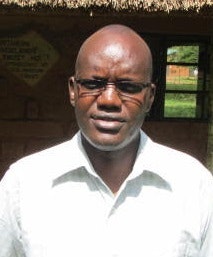Winner of the Whitley Award donated by The LJC fund in memory of Anthea and Lindsey Turner
Daniel Letoiye was born into the nomadic Samburu pastoral community in Kenya, who are related to the Maasai, and his first wildlife encounters took place while herding his father’s livestock aged ten years old. Later, as a teacher in the primary school where he had also been a pupil, his lifetime fascination with the charismatic Grevy’s Zebra began. Indeed the Grevy’s Zebra holds a special place in wider local culture as a symbol of both peace and beauty, but also as its braying acts as both an alarm clock and barometer signalling daybreak and imminent rainfall. Yet despite this iconic status, since the 1970s Kenya’s Grevy’s Zebra population has declined from 14,000 to current estimates of about 2,400 individuals. The species has been categorised as endangered in the IUCN Red list and was listed on Appendix 1 of CITES in 2012.

The Samburu live in a remote grassland environment, where until recently livestock husbandry was the sole source of livelihood. However, the creation of the Samburu National Reserve in 1985 brought international tourism to the region which is home to the famous big five (lion, leopard, elephant, buffalo and rhino), as well as the ‘special big five’ (Reticulated giraffe, Beisa oryx, Grevy’s zebra, gerenuk and Maasai ostrich), which are only found in this part of Kenya and nowhere else in the world. Samburu is also an ornithologist’s paradise with more than 365 bird species recorded.

Over many years the arid and semi-arid grasslands of Northern Kenya have endured poor land use practices and the intensification of human activity resulting in their degradation. This in turn poses a major threat to the future security of wildlife, local people and their livestock, reliant on these grasslands for survival. In 2004, Daniel founded the Westgate Community Conservancy which promotes better management and farming practices to reduce grassland degradation and foster ecological, socio-cultural and economic sustainability. In order to achieve their long-term conservation objectives, the Conservancy has focussed on promoting better land use management to reverse the decline in threatened wildlife including flagship species such as Grevy’s Zebra. These have included piloting a successful habitat restoration project: introducing planned grazing regimes, re-seeding of grasslands, and managing animal impact as well as the use of technology for monitoring and communication purposes.

Most challenging of all has been finding ways to change the negative attitudes of local communities and outright opposition from government officials towards their conservation efforts. The Conservancy now plans to expand its habitat restoration efforts across the wider landscape, not only to ensure Grevy’s zebra population numbers increase within their natural range, but also to foster ecological, socio-cultural and economic sustainability.
Daniel’s Whitley Award winning project aims to:
- Restore grasslands and encourage more sustainable practices to reverse the decline in Grevy’s zebra and improve livelihood security.
- Set up community based wildlife monitoring.
- Establish Westgate as a community training centre in Kenya and East Africa.
Why it matters:
- Grevy’s zebra are one of Africa’s most endangered large mammals.
- Less than 0.5% of the Grevy’s zebras range is protected.
- Win-win for people and wildlife.



